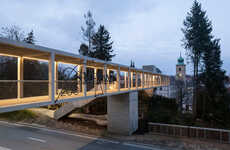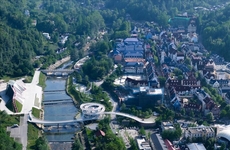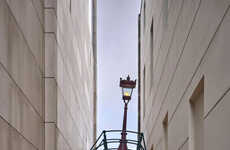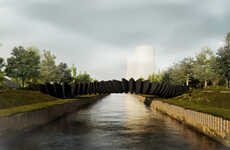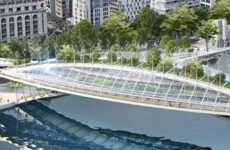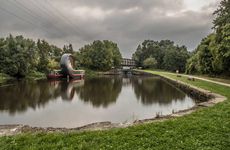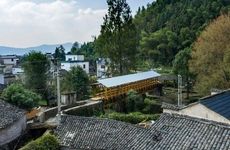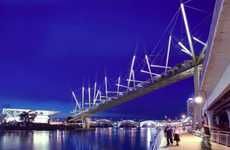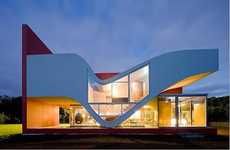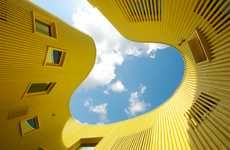
West 8 Architects' Twist Bridge Inspires Imagination in a Functional Way
Meghan Young — November 26, 2011 — Art & Design
References: west8.nl & mymodernmet
Overpasses and walkways may be necessary to encourage and accommodate growing foot traffic, but the Twist Bridge shows that designers should focus as much on form as they do on function. As part of a city's landscape for years to come, bridges like the Twist Bridge can bring a unique point of interest, resulting in pride and even awe.
Designed by West 8 Architects and engineered by ABT, the Twist Bridge does both. It uses a simple optical illusion to create a warped walkway that plays with people's minds. Connecting the Holy-Zuid district with the Broekpolder district over the Vlaardingse Vaart river in The Netherlands, the Twist Bridge was constructed out of 400 steel tubes. Visually striking, the design inspires imagination each time a person crosses it.
Designed by West 8 Architects and engineered by ABT, the Twist Bridge does both. It uses a simple optical illusion to create a warped walkway that plays with people's minds. Connecting the Holy-Zuid district with the Broekpolder district over the Vlaardingse Vaart river in The Netherlands, the Twist Bridge was constructed out of 400 steel tubes. Visually striking, the design inspires imagination each time a person crosses it.
Trend Themes
1. Form-focused Bridges - Designers are focusing on creating bridges that are not only functional but also visually striking, providing a unique point of interest.
2. Optical Illusion Structures - Architects are using optical illusions in the design of structures, creating visually captivating and mind-bending walkways.
3. Imagination-inspiring Designs - Designers are aiming to create structures that inspire the imagination, offering an experience that goes beyond mere functionality.
Industry Implications
1. Architecture - Architects have the opportunity to incorporate imaginative and visually appealing designs into structures like bridges, enhancing the overall aesthetic of cities.
2. Civil Engineering - Civil engineers can explore the use of optical illusions in bridge designs, creating unique and mind-bending structures.
3. Urban Planning - Urban planners can consider incorporating form-focused bridges into city landscapes, providing points of interest and enhancing the overall urban experience.
5
Score
Popularity
Activity
Freshness


